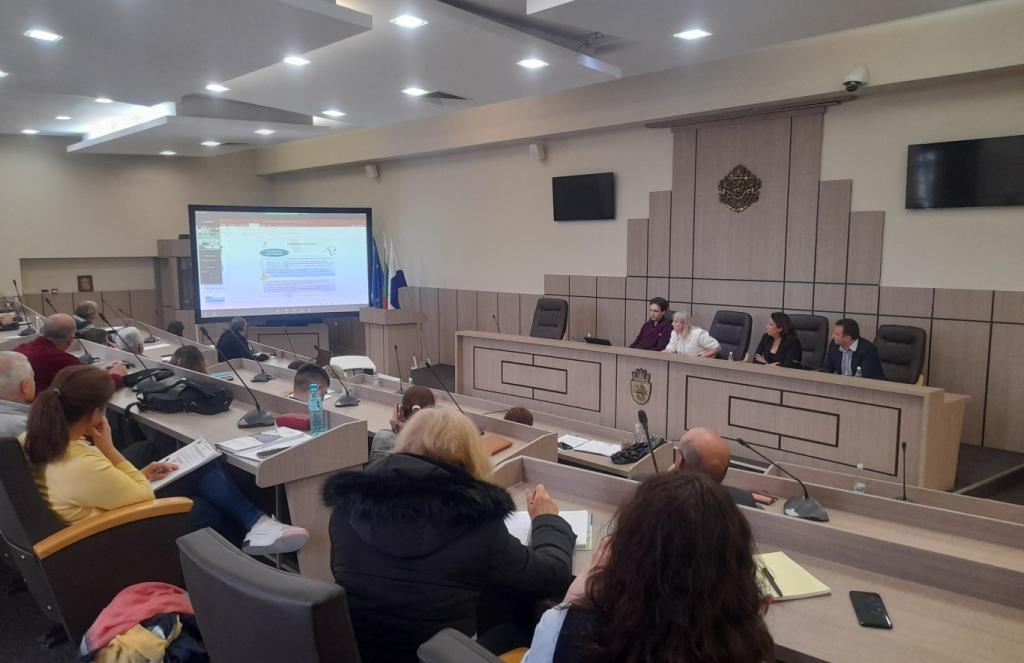Thessaloniki gets ready for its metro launch in November
The underground rapid transit lines have been under construction for almost two decades due to various project delays
 TheMayor.EU logo
TheMayor.EU logo 
The forum included businesses, NGOs and building owners and managers, as they are the main driver of a potential solar drive, Source: City of Burgas
The city will develop an open platform that will calculate every building's potential solar energy output as well as the cost of installation
Yesterday, authorities in Burgas, Bulgaria, announced a set of renewable energy measures during a forum with key stakeholders in the city. The forum included local business representatives and non-governmental organisations, as well as owners of multifamily homes, who local authorities identify as the main driver for expanding Burgas’ renewable energy production.
Furthermore, city officials also presented its SOLAR CITY project, which aims to blanket residential buildings with photovoltaic (PV) systems. The first stage which is already complete involved mapping the roofs in the city’s Meden Rudnik district and evaluating each roof’s potential solar energy generation capacity.
The forum also aimed at presenting key actors in the urban ecosystem with the new mechanisms for financing renewable energy projects via the Bulgarian National Recovery and Resilience Plan. At the same time, the city announced the opening of an energy office, which should act as an information hub for both citizens and companies for funding schemes on energy efficiency projects.
According to a recent report by Bulgarian National Radio, Ivaylo Trendafilov, an expert at the Burgas municipality, explained that the Solar City project is aimed at citizens who want to install PV systems on their roofs.
Trendafilov said that authorities are working on creating a comprehensive map of the city, which will be publicly available via a digital platform. The map will allow citizens to, as he puts it, find their own buildings and see the potential energy yield of a PV system.
He continued by pointing out that not all roofs are created equal as the east-west, north-south orientation can cause considerable disparities. At the same time, the platform would also be able to calculate how many photovoltaic panels can be installed and how much that would cost, in addition to showing the saved carbon emissions.
Mapping out the city in this way would also help authorities reach a few sustainability goals. This will be able to provide them with the exact size of green spaces and all tree species in the city. Trendafilov said that after the project is complete, authorities will know the location of species and their sizes.
Using the data, the officials will then be able to determine the green space to build space ratio and access how green the city actually is. This would, in turn, help to inform them about the scope and goals of green initiatives in the future.

The underground rapid transit lines have been under construction for almost two decades due to various project delays

Now you can get your wine in Talence by paying directly in Bitcoin

That’s because the state has to spend money on updating the railway infrastructure rather than subsidizing the cost of the popular pass

Rethinking renewable energy sources for the urban landscape

The examples, compiled by Beyond Fossil Fuels, can inform and inspire communities and entrepreneurs that still feel trepidation at the prospect of energy transition

Now you can get your wine in Talence by paying directly in Bitcoin

The 10th European Conference on Sustainable Cities and Towns (ESCT) sets the stage for stronger cooperation between the EU, national and local level to fast track Europe's transition to climate neutrality.

At least, that’s the promise made by the mayor of Paris, Anne Hidalgo

The underground rapid transit lines have been under construction for almost two decades due to various project delays

At least, that’s the promise made by the mayor of Paris, Anne Hidalgo

Hostal de Pinós is located in the geographical centre of the autonomous region

Despite its church-y name, the district has long been known as the hangout spot for the artsy crowds

Urban dwellers across the EU are having a say in making their surroundings friendlier to people and the environment.

Forests in the EU can help green the European construction industry and bolster a continent-wide push for architectural improvements.

Apply by 10 November and do your part for the transformation of European public spaces

An interview with the Mayor of a Polish city that seeks to reinvent itself

An interview with the newly elected ICLEI President and Mayor of Malmö

A conversation with the Mayor of Lisbon about the spirit and dimensions of innovation present in the Portuguese capital














